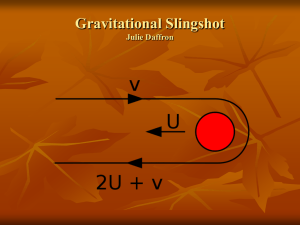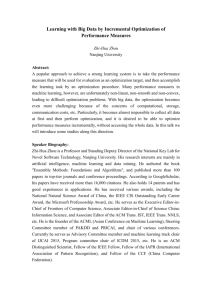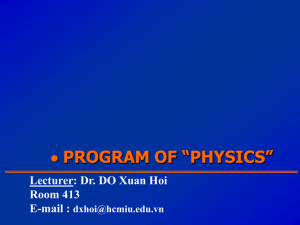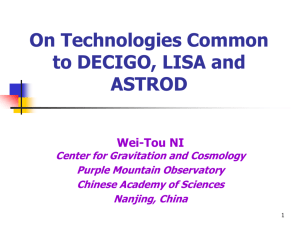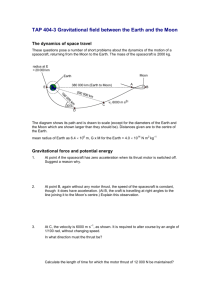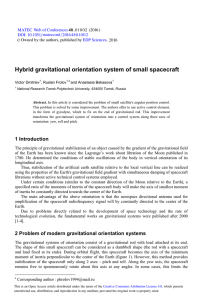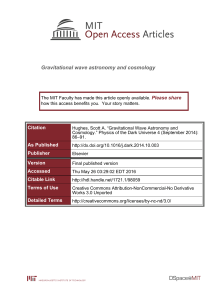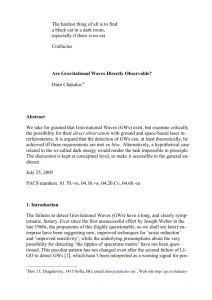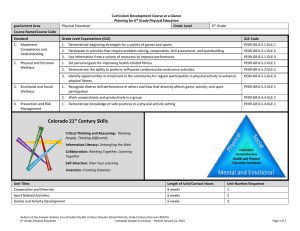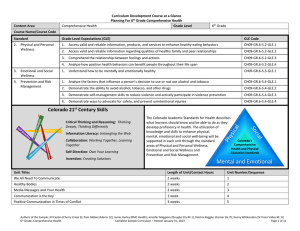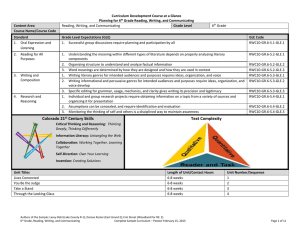ASTROD optimized for Gravitational Wave detection: ASTROD
advertisement
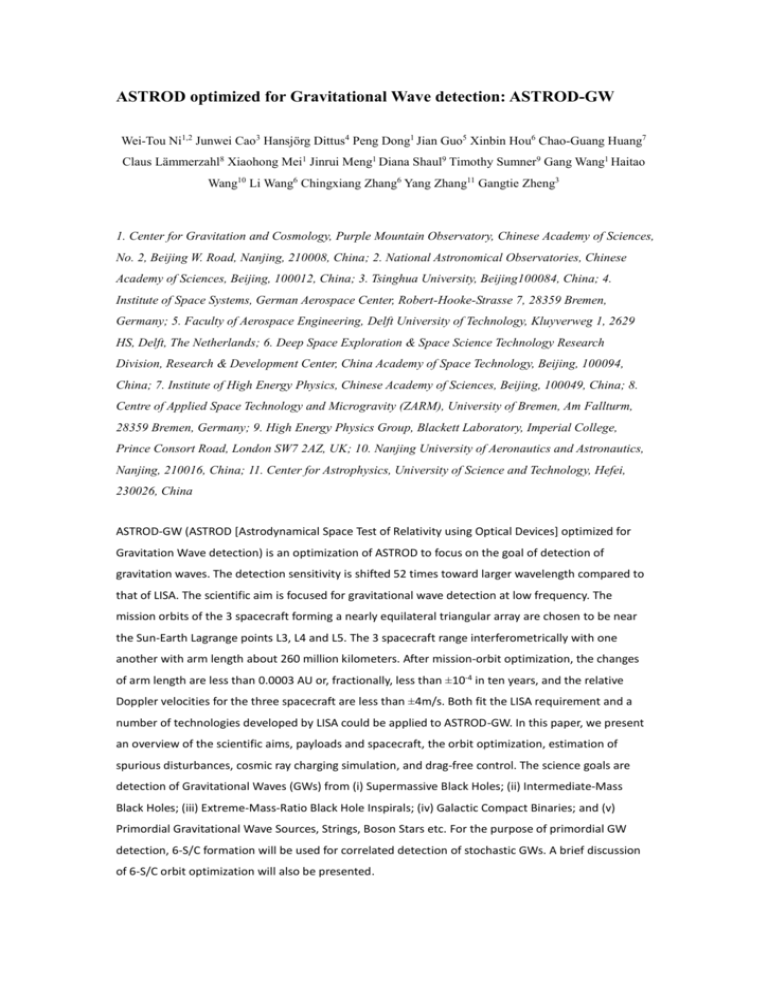
ASTROD optimized for Gravitational Wave detection: ASTROD-GW Wei-Tou Ni1,2 Junwei Cao3 Hansjörg Dittus4 Peng Dong1 Jian Guo5 Xinbin Hou6 Chao-Guang Huang7 Claus Lämmerzahl8 Xiaohong Mei1 Jinrui Meng1 Diana Shaul9 Timothy Sumner9 Gang Wang1 Haitao Wang10 Li Wang6 Chingxiang Zhang6 Yang Zhang11 Gangtie Zheng3 1. Center for Gravitation and Cosmology, Purple Mountain Observatory, Chinese Academy of Sciences, No. 2, Beijing W. Road, Nanjing, 210008, China; 2. National Astronomical Observatories, Chinese Academy of Sciences, Beijing, 100012, China; 3. Tsinghua University, Beijing100084, China; 4. Institute of Space Systems, German Aerospace Center, Robert-Hooke-Strasse 7, 28359 Bremen, Germany; 5. Faculty of Aerospace Engineering, Delft University of Technology, Kluyverweg 1, 2629 HS, Delft, The Netherlands; 6. Deep Space Exploration & Space Science Technology Research Division, Research & Development Center, China Academy of Space Technology, Beijing, 100094, China; 7. Institute of High Energy Physics, Chinese Academy of Sciences, Beijing, 100049, China; 8. Centre of Applied Space Technology and Microgravity (ZARM), University of Bremen, Am Fallturm, 28359 Bremen, Germany; 9. High Energy Physics Group, Blackett Laboratory, Imperial College, Prince Consort Road, London SW7 2AZ, UK; 10. Nanjing University of Aeronautics and Astronautics, Nanjing, 210016, China; 11. Center for Astrophysics, University of Science and Technology, Hefei, 230026, China ASTROD-GW (ASTROD [Astrodynamical Space Test of Relativity using Optical Devices] optimized for Gravitation Wave detection) is an optimization of ASTROD to focus on the goal of detection of gravitation waves. The detection sensitivity is shifted 52 times toward larger wavelength compared to that of LISA. The scientific aim is focused for gravitational wave detection at low frequency. The mission orbits of the 3 spacecraft forming a nearly equilateral triangular array are chosen to be near the Sun-Earth Lagrange points L3, L4 and L5. The 3 spacecraft range interferometrically with one another with arm length about 260 million kilometers. After mission-orbit optimization, the changes of arm length are less than 0.0003 AU or, fractionally, less than ±10-4 in ten years, and the relative Doppler velocities for the three spacecraft are less than ±4m/s. Both fit the LISA requirement and a number of technologies developed by LISA could be applied to ASTROD-GW. In this paper, we present an overview of the scientific aims, payloads and spacecraft, the orbit optimization, estimation of spurious disturbances, cosmic ray charging simulation, and drag-free control. The science goals are detection of Gravitational Waves (GWs) from (i) Supermassive Black Holes; (ii) Intermediate-Mass Black Holes; (iii) Extreme-Mass-Ratio Black Hole Inspirals; (iv) Galactic Compact Binaries; and (v) Primordial Gravitational Wave Sources, Strings, Boson Stars etc. For the purpose of primordial GW detection, 6-S/C formation will be used for correlated detection of stochastic GWs. A brief discussion of 6-S/C orbit optimization will also be presented.
